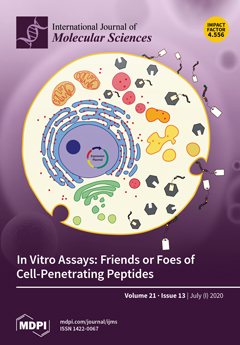Unraveling the role of cytochrome P450 monooxygenases (CYPs/P450s), heme-thiolate proteins present in living and non-living entities, in secondary metabolite synthesis is gaining momentum. In this direction, in this study, we analyzed the genomes of 203
Streptomyces species for P450s and unraveled their association
[...] Read more.
Unraveling the role of cytochrome P450 monooxygenases (CYPs/P450s), heme-thiolate proteins present in living and non-living entities, in secondary metabolite synthesis is gaining momentum. In this direction, in this study, we analyzed the genomes of 203
Streptomyces species for P450s and unraveled their association with secondary metabolism. Our analyses revealed the presence of 5460 P450s, grouped into 253 families and 698 subfamilies. The CYP107 family was found to be conserved and highly populated in
Streptomyces and
Bacillus species, indicating its key role in the synthesis of secondary metabolites.
Streptomyces species had a higher number of P450s than
Bacillus and cyanobacterial species. The average number of secondary metabolite biosynthetic gene clusters (BGCs) and the number of P450s located in BGCs were higher in
Streptomyces species than in
Bacillus, mycobacterial, and cyanobacterial species, corroborating the superior capacity of
Streptomyces species for generating diverse secondary metabolites. Functional analysis
via data mining confirmed that many
Streptomyces P450s are involved in the biosynthesis of secondary metabolites. This study was the first of its kind to conduct a comparative analysis of P450s in such a large number (203) of
Streptomyces species, revealing the P450s’ association with secondary metabolite synthesis in
Streptomyces species. Future studies should include the selection of
Streptomyces species with a higher number of P450s and BGCs and explore the biotechnological value of secondary metabolites they produce.
Full article






